Earthquake Aftermath in Myanmar: Surviving Women Stand By Amidst Uncertain Future
SAGAING – The 7.7 magnitude earthquake that struck on March 28 left communities across Myanmar facing both physical and mental challenges in their day-to-day lives.
As of April 22nd, nearly 3,800 people have died and 5,000 are injured, and more than 370 remain missing. At least 5 million people are severely affected, some in hard-to-reach locations. The quakes impacted 58 townships across Mandalay, Sagaing, Nay Pyi Taw, Bago, Kayin, and parts of Shan State.
Trade and business activities have been brought to a standstill, especially in Mandalay and Sagaing, which are the hardest-hit cities, with 30% to 80% of buildings destroyed or damaged. Mandalay, Myanmar’s second-largest business hub, serves as a key market network between the northern and southern regions, as well as being the gate of the India and China routes. Sagaing, just 15 miles away, is economically reliant on Mandalay.
Our reporter Josephine Kyi travelled in the villages around Sagaing City in the week following the main quake to collect the stories of women who are surviving on their own.
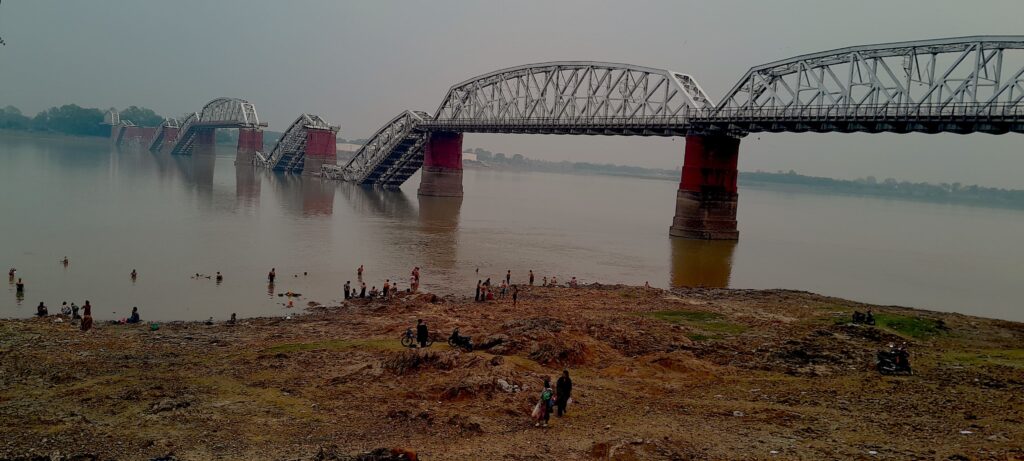
An old bridge connecting the two cities was destroyed, and the only remaining bridge allows traffic in just one direction at a time. In downtown Sagaing, many shops remain shuttered. Locals are unable to purchase even basic necessities, such as drinking water. As drinking water is unavailable and underground sources are contaminated by extreme soil movements, the risk of waterborne diseases has increased.
Three weeks on, electricity services are yet to resume. Electrical infrastructure – transformers, utility poles, and more – have been severely damaged, as demand for shelter and construction materials continues to rise.
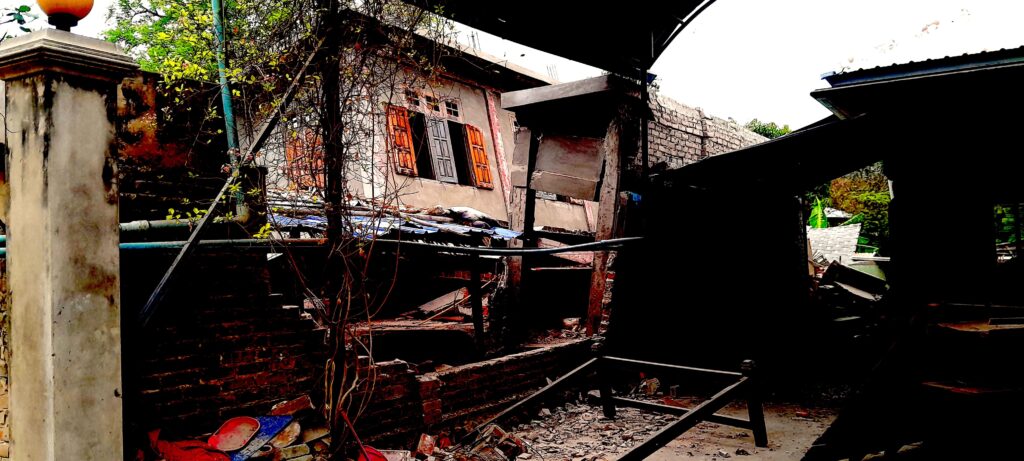

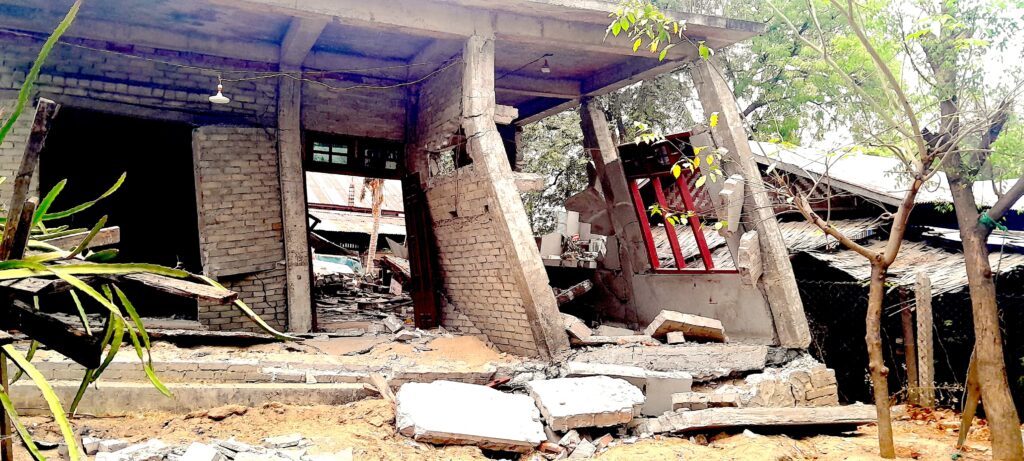
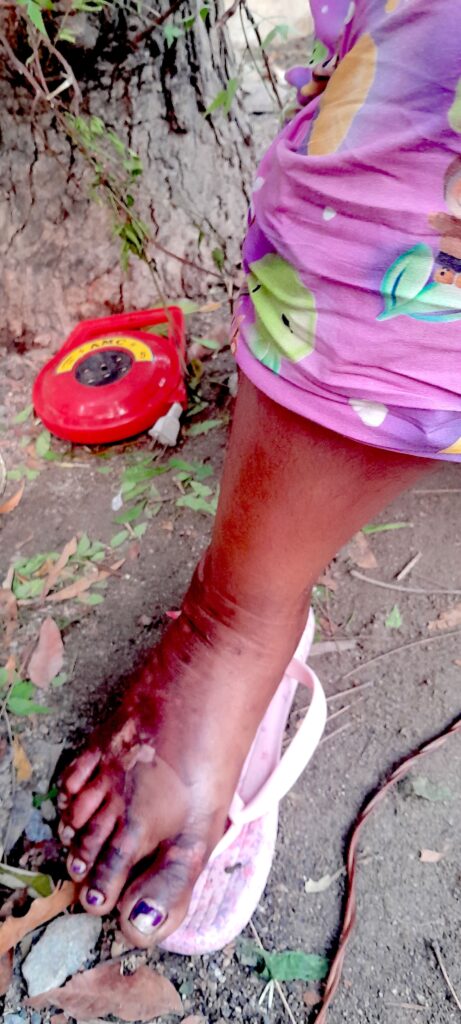
Daily wage earners have found themselves suddenly unemployed.
Myo Myo*, a 25-year-old woman, was severely injured in the quake, yet her thoughts remain fixed on finding work. She had been working as a kitchen hand at a popular street food shop next to a well-known pagoda in Sagaing. The shop, like the pagoda, drew locals and tourists alike.
The shop employed around ten workers daily, all women, including the owner. Pay varied according to experience and skill, Myo Myo explained. They specialized in traditional Burmese salads and soups.
Myo Myo was one of the highest-paid workers, earning 10,000 Kyat per day. “I am not really skilled in anything else like some of my friends,” she said. “Selling food is all I know.”
When the earthquake struck central Myanmar, she was preparing orders beside a large pot of kyarzan hin ghar – a sour and spicy glass noodle soup popular in the afternoons. “It was a big pot, enough for about 200 bowls,” she said. “It was during our early opening hour. The whole pot tipped over onto my feet, and I couldn’t dodge it.”
Her boss, who managed to find a shelter in Sagaing City, didn’t support her in any way after she was injured. Myo Myo was later treated by a Chinese medical volunteer team stationed at a nearby monastery. Her workplace suffered heavy damage, and she doubts the shop will reopen anytime soon. Markets are barely functioning with essential items in short supply and prices soaring, including rice, oil and vegetables.
“I am hoping my foot heals by the end of this week. If it does, I can look for work as a construction labourer at one of the damaged buildings nearby,” she said, continuing to search for work that might cover her daily expenses.
Small-scale donations of food and groceries continue in Sagaing, but Myo Myo knows they won’t meet her household’s long-term needs. Homes, hospitals, roads, airports, and water and sanitation systems have been severely damaged or destroyed, impacting people’s ability to access essential services and hindering the humanitarian response.
The military council has also been accused of hoarding tons of humanitarian aid in the capital Naypyidaw, left to rot in offices and stadiums without being distributed to civilians. Reports also mention the selling of humanitarian aid on the black market, such as packs of fortified biscuits for 500 MMK in Nay Pyi Daw. The previous junta acted the same way in the aftermath of Nargis, the second-deadliest named cyclone of all time. The storm devastated Myanmar in 2008 and triggered a mass migration from the battered field of the Irrawaddy Delta to the burgeoning textile factories hub of Hlaing Tha Yar, in the outskirts of Yangon
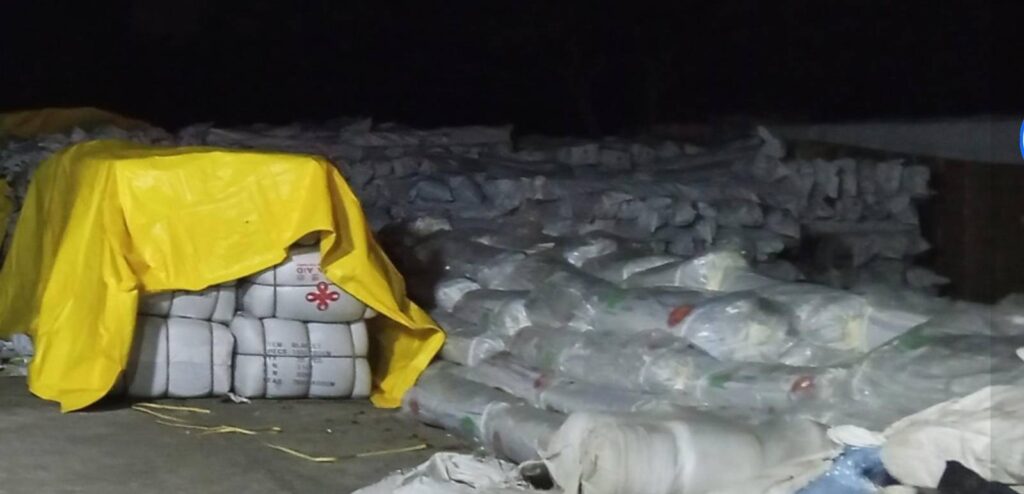
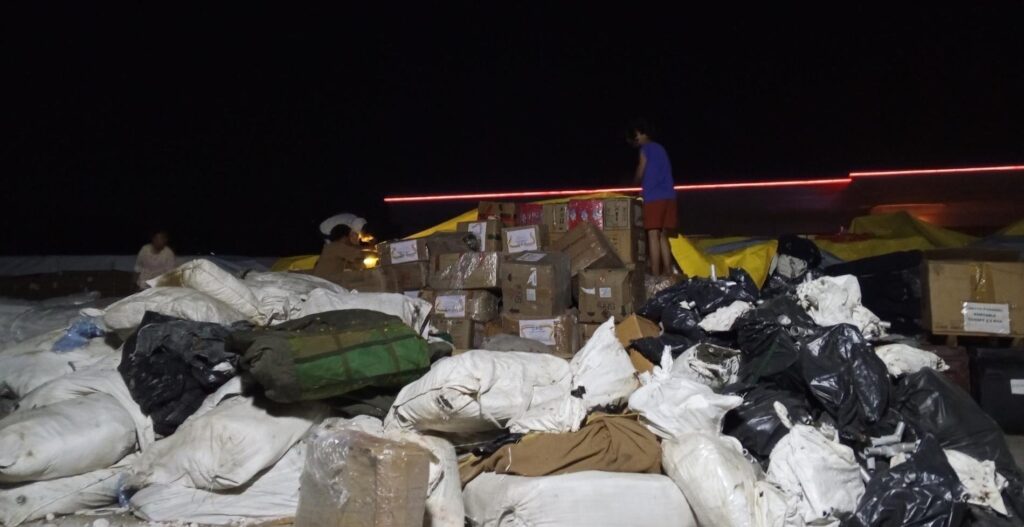
Pann Nu*, a queer woman in her late 20s, owns a small salon and is the primary breadwinner for nine family members. Her salon wasn’t severely damaged, but business remains halted. “My customers are locals—they’ve been hit hard by the disaster. Food and shelter are their priorities now,” she said.
Electricity and mobile phone services remain unstable more than three weeks after the quake. Sagaing is located in the Sagaing Region, where an internet blackout enforced by the junta has prevailed since early 2022. Only four cities in the region, including Sagaing, still have access to internet services.
The electricity outages have disrupted water supply systems as well, leading to shortages. Many residents now bathe and wash clothes beside the Ayeyarwady River.

Ma Thuzar* has spent her days clearing rubble and setting up temporary shelter with her mother and aunt. Their two-story wooden home was destroyed, along with the toy store they ran on the ground floor.
“All the expensive toys were smashed, along with the glass cabinets they were kept in. What is left are the cheap ones – but we have nowhere to store them now,” she said. She salvaged three large bags of undamaged toys from the ruins.
In just minutes, her home and family business were gone. The family receives food from their mosque and direct donations from people who recognize the visible damage to their house. They haven’t ventured far to collect aid. “We don’t have time,” she said. “We need to clean up first.” She worries about the rain forecast for the coming days. The early onset of the monsoon season is compounding the crisis with risks of flooding, landslides, and disease outbreaks.
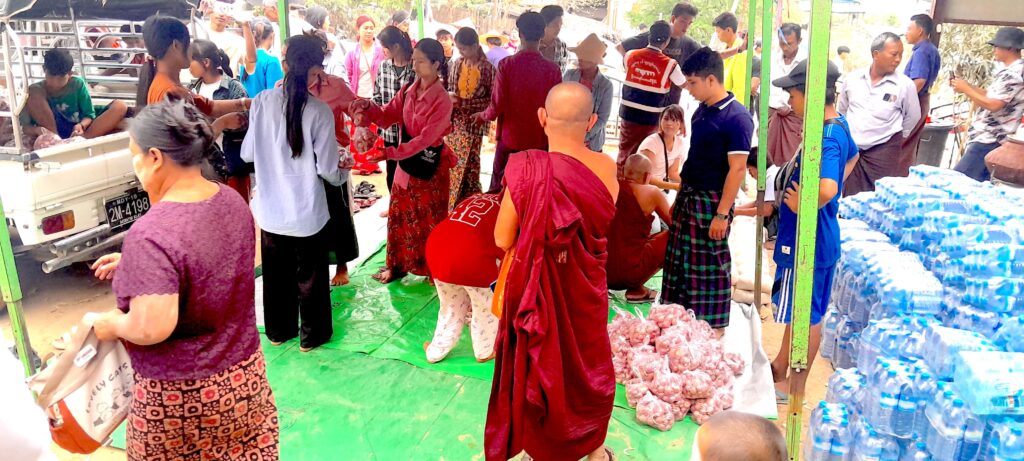
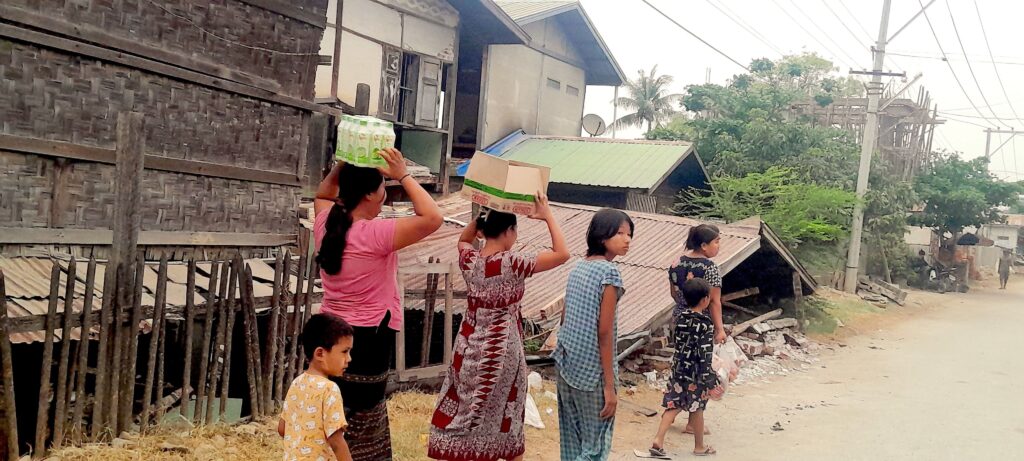
May Khin*, in her late 20s, is due to give birth in April. Already anxious as a first-time mother, the earthquake has heightened her fears. Though physically unharmed, she is mentally shaken.
“It’s only six days until my due date. I’m terrified – what if there’s another quake while I’m in the hospital?” she said. Pregnancy limits her mobility, making it harder to respond in an emergency.
Her home was spared, but fear of lingering aftershocks continues to haunt her. She lives with extended family, who try to support one another as best they can. 223,160 pregnant women are struggling to access life-saving sexual and reproductive health services and the number of live births expected for the next month is 297,540, according to UNFPA.
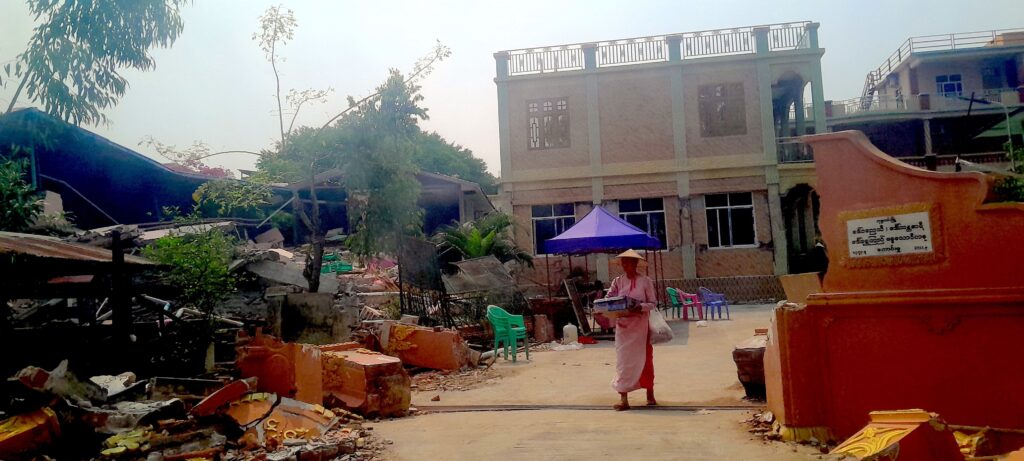
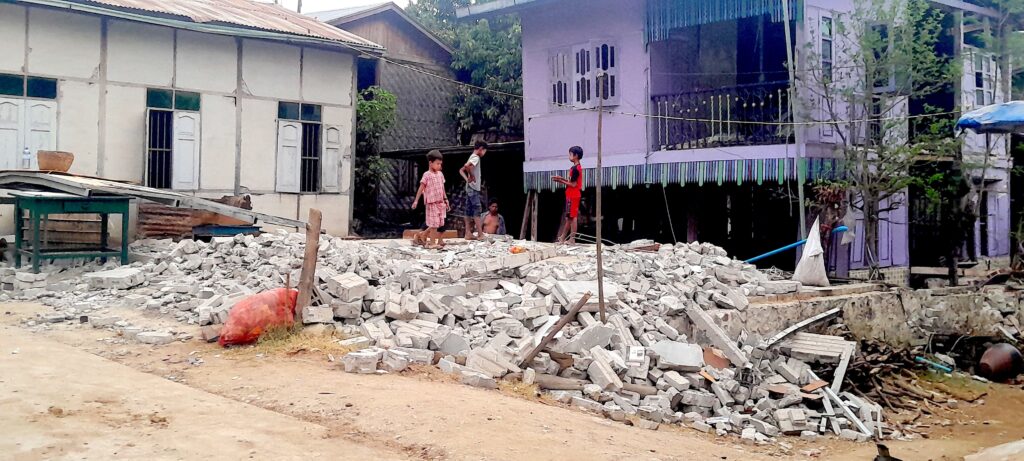
Two weeks after the disaster, a funeral was held at a rest stop on the outskirts of a village along the Ayeyarwady River. The deceased was a woman who died from internal injuries sustained while protecting her two-year-old during the earthquake.
“She saved her child—the kid survived,” said a neighbour. Though she reached a hospital outside the village and received care, she passed away after more than a week.
Because she died outside the village, her body was not permitted to return home for burial. At the roadside rest stop, her body lay on the floor while a few women sat silently nearby. No one cried. No one spoke. On the third day after her death, she was buried.
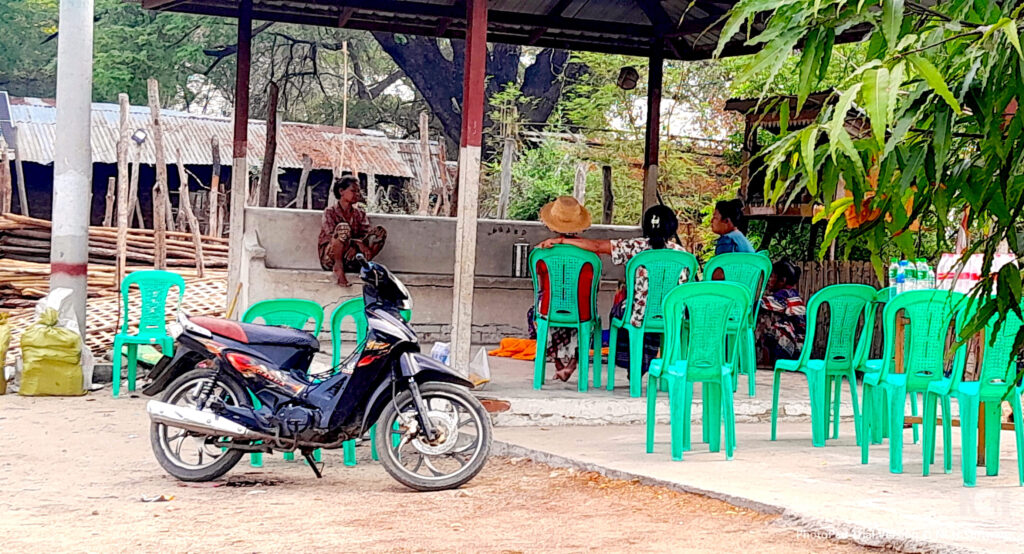

Survivors have to keep watching out for death coming from the sky. The coup-making military regime declared a ceasefire from April 2nd until April 22nd. When it declared the truce, the junta warned it would attack resistance training centers, considering activities to be preparation for future attacks. During the announced “quake truce”, the junta has carried out over 120 artillery attacks and airstrikes, mostly on civilian targets, across 12 out of 15 regions and states, killing at least 81 people and injuring over 120 others.
Lest we forget that many families lost their male relatives as the time of the earthquake coincided with the Friday prayer for Muslim people, who were among the first victims as the old mosques collapsed all around the area.
We wished to collect the Voices of Muslim women in Mandalay, who despite being affected by the latest natural disaster, showed the way by effectively catering first to the needs of their families and communities.
Our fellows (left: Luna Artworks / right: T.H.A.) at Cartooning for Myanmar captured the shocking reality of the military junta using every source of income or aid to purchase more weapons and relentlessly attack the Myanmar people as it is losing grip on most of the national territory.
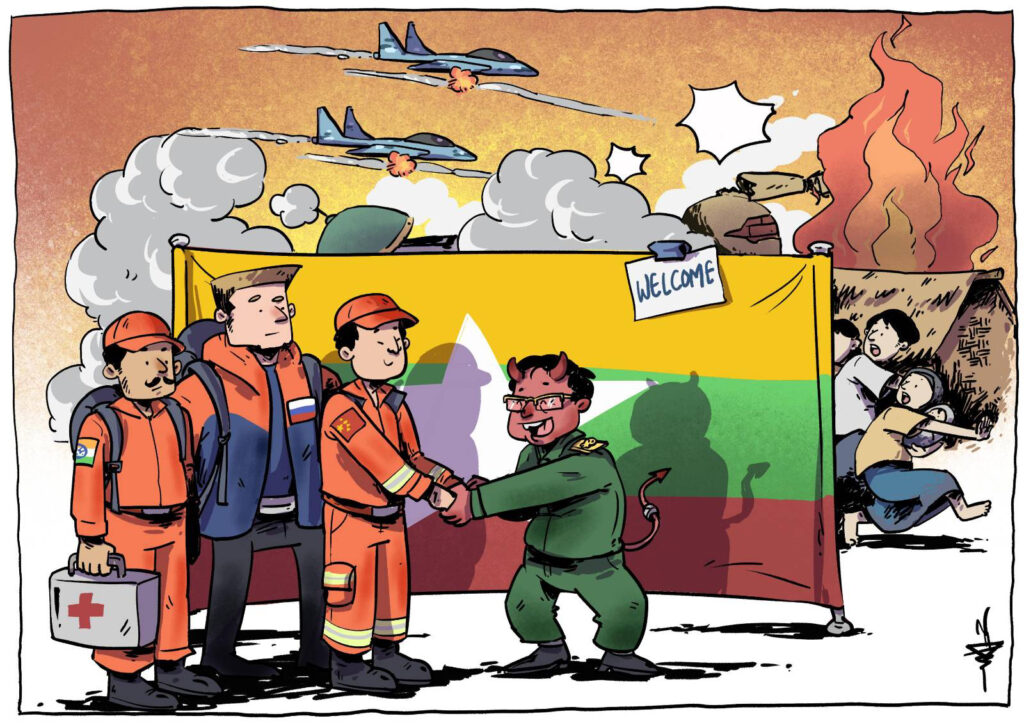
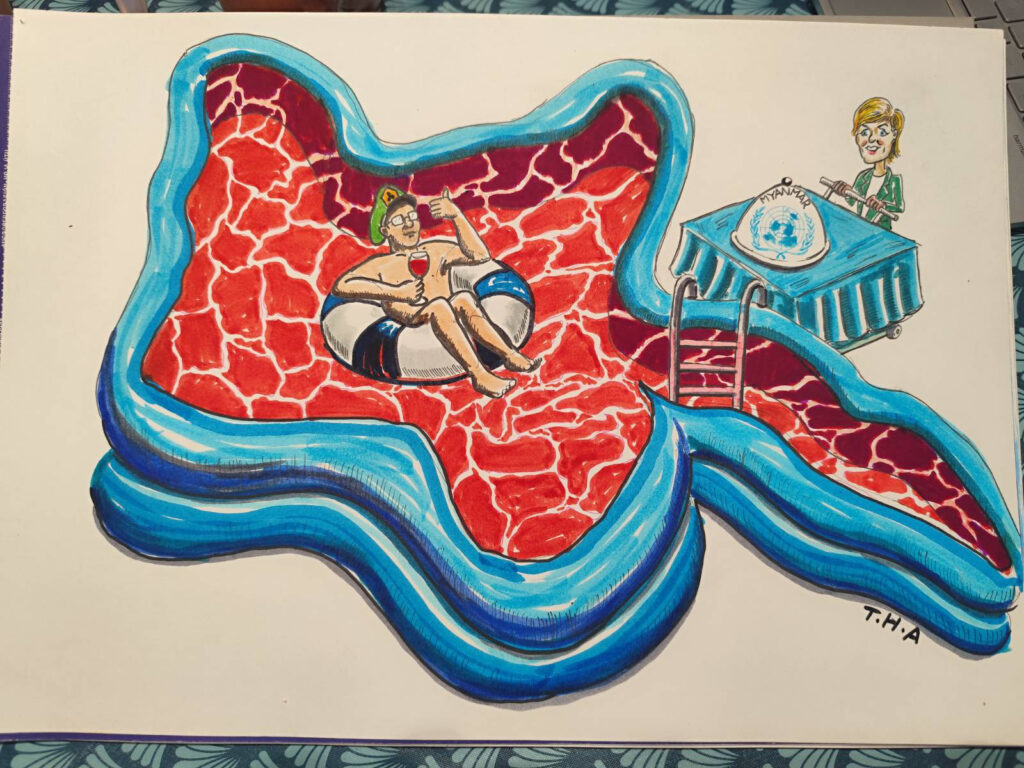
/ Our fellowship / The “Cartooning for Myanmar” project, set up by Info Birmanie and Visual Rebellion and supported by the City of Paris & RSF & Cartooning for Peace, brings together seven Burmese cartoonists who are determined to bear witness to what is happening in their country and to learn about press cartooning, by offering them the chance to get involved in a project to create an exhibition in France tracing the situation in Myanmar since the military coup of 1 February 2021 through press cartoons.
You can follow and support their work on Facebook & Instagram & Twitter, while waiting for an upcoming exhibition in France.
* Names in the story have been changed for security reasons